ModMyMods ModPaste Thermal Compound Review
Author: Dennis GarciaTesting the MP-9 Modpaste Compound
For this review I have decided to test the ModMyMods ModPaste against two common thermal compounds.
- Geild GC Extreme
- Arctic Silver Ceramique 2
When it comes to color the MP-9 ModPaste resembles most modern thermal compounds with a medium grey color being lighter than Artic Silver 5 and darker then the Geild GC Extreme.
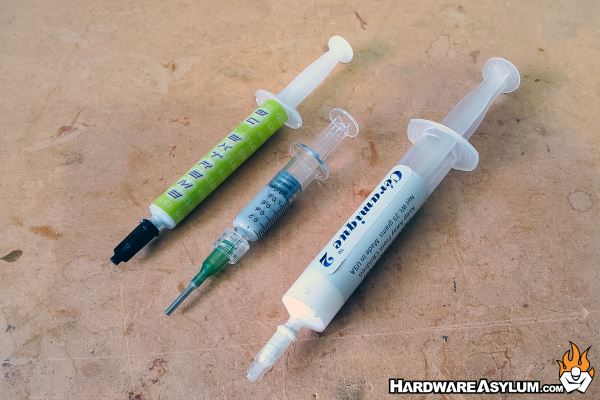
For thermal compounds to be effective they need a binder to hold and allow the microscopic particles to move around. This binder is similar to what allows paints to be applied to a surface. It may look liquid however once the binder is removed the left over particles become solid.
According to the ModMyMods product page, the MP-9 thermal compound is oil based giving it a lower electrical conductance while still offering effective thermal transference. This also means that it will leach if placed on something that loves to absorb oil, such as cardboard.
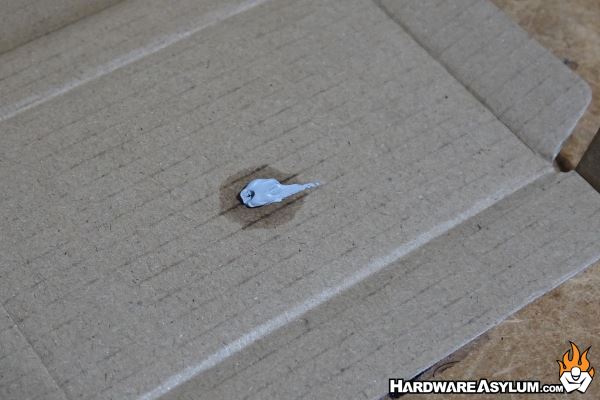
This is a photo of what happens to the MP-9 after 24 hours of being left out on standard corrugated cardboard. From a testing standpoint this is completely pointless but, does give you some idea as to the composition of the compound. I also tested the conductivity of the compound and did not register on my Fluke meter.
Per my usual approach to thermal testing I look at things from a real world perspective. To facilitate this I use real computers, simulated and repeatable workloads and monitor the ambient temperature. Final load temps are recorded and run back to back to look for any variances.
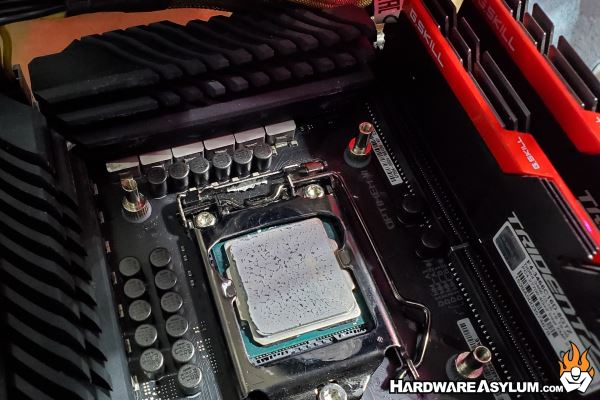
There are MANY different ways to install thermal compound. I prefer the “5-Dot” Method and have been using that method since the introduction of the heat spreader. I have tested many heatsinks this way and built $5000 machines with zero issues. The paste has ALWAYS spread evenly with 100% coverage and has been thermally consistent across multiple mountings. I cannot say the same for “Pea” or “Spread” methods.
ASUS Maximux XII Hero – Z490 Chipset
Intel Core i9 10900k (3.7Ghz) Deca Core 10 x 32KB L2 Cache 10 x 256KB L3 Cache 20MB
Aquacomputer Cuplex Kryos Next CPU Block on a DIY custom loop and D5 pump
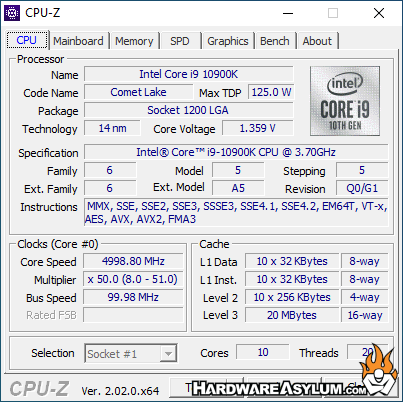
The onboard temperature probe was used to obtain and record system temperature data and being that this is a multi core processor we need something that will work across all of the cores at once. For this task we're using Prime95 set to Small FFTs and enough instances to cover all the cores
Editors note: Even though the Windows 10 task manager reported 100% processor usage we could never attain a 100% of the rated heat output as documented by Intel when using Prime95 as a basis for that heat production. Knowing this we ran the stress test until the maximum temperature was attainted and stabilized.
Other things to consider when judging software induced heat output.
a) Clock throttling by the processor at high temperatures.
b) Normal software isn't designed to produce maximum heat output.
c) Variances of cooling temperature.
d) Variances in CPU load.
e) Inaccuracies in thermal diode readouts.
Of course the list goes on..
Our testing methodology is aimed to provide a real world look into this heatsink given the test system provided.
Core speed was 5Ghz @ 1.3v. Prime95 was used to simulate the heat load. Temperatures were recorded after 3 loops of Prime95 and a second run was done once the CPU temp reset back to idle.
Ambient Temperature at the radiator: 18c
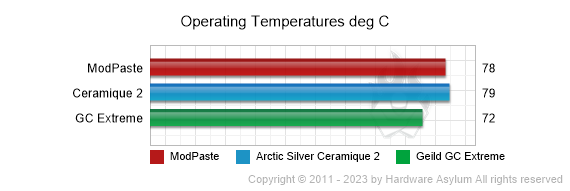
Based on the thermal testing results the MP-9 is pretty average when it comes to thermal performance just edging out the Ceramique 2.

